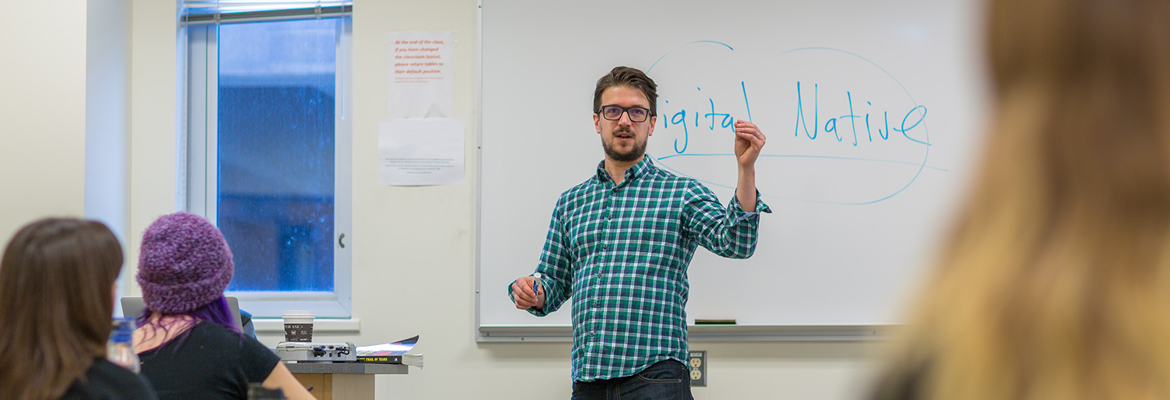For David Gaertner, it is important that his students have the opportunity to create work with a broader impact that can live beyond the classroom walls. “A big part of my pedagogy is getting students to think outside the limitations of the university,” explains Gaertner, an instructor in First Nations and Indigenous Studies.
Rather than focusing on writing solely for the professor, Gaertner wants his students to consider different audiences and develop their own voices. “I think introducing digital projects and open practices is fundamental to making that happen,” he says.
In his classes, students create different types of digital media, ranging from blogs to podcasts. Their work is published on various platforms, which the public can see and interact with.
While students are excited to take part in projects that will be widely shared, such open projects also come with responsibility and accountability. For one assignment, students created information and communication technology prototypes for sharing data in UBC’s new Indian Residential School History and Dialogue Centre.
“This assignment extends beyond just the classroom and me. It is meaningful to the Centre, it is meaningful to a legacy of settler colonialism here, and it is meaningful to the university as well,” Gaertner says.
He also believes it is important that students are recognized for their academic work. For another project, his students created a series of podcasts on Indigenous issues alongside CiTR, the campus radio station.
“They’re doing three-hour radio docs on Indigenous issues that they think are important and that the university as a whole should be aware of,” Gaertner explains. The podcasts will be distributed across campus, with the names of the students who created them. “Holding up students’ research and pointing to the ways in which they are making contributions is something I’ve tried to do as a professor, to add validity to those voices and to make those voices heard,” Gaertner says.
Since their work is being shared in the open, Gaertner aims to teach his students about their rights as content creators. He says, “While I use open practices and I use digital technologies, we do that through a window of copyright and creative commons so [students] can understand what the rights are around their words and the way that they get them out there.”
Navigating the risks
Sharing work online comes with its own set of risks. A glance at the comments section of any article or blog shows that the online world is often filled with critical or derogatory reactions. Gaertner notes the importance of being clear early on with students about these possible dangers.
“Attacks that happen online hurt. They are damaging and they cause emotional turmoil,” Gaertner says, noting that there is a tendency to dismiss the impact of online attacks. “Being aware of those risks is important,” he says, “and being aware that people of colour and women are more so at risk.”
With the sensitive topics his students often explore, coupled with the pressure of having their work in the open, Gaertner says it is essential to build cultures of care and set up safe spaces where students can express themselves, talk to their classmates and professor, and reflect on their online experiences. He adds that students are never penalized for opting out, and they can still engage in the learning process. They can also remove their projects from the public realm at any time.
Building community
Gaertner sees community as a verb rather than a noun—something you’re actively doing. The projects that his students work on are a way of building community both inside and outside the classroom.
“What I find with technology and open spaces is that they are ways of doing community, whether that’s a wiki that students are building together, or whether it’s putting together a podcast with a group of people—it’s a way of building community that happens in the moment,” he explains.
The goal when working on digital projects, Gartner emphasizes, is not to create a perfect end product. Rather, the value is in the process of creation. “Where the learning, where the community-building comes in, is doing it together,” he says. “And as a professor, you can be part of that process.”
Gaertner hopes that through these processes, students will feel empowered to not only make digital technologies, but to create “communities that can rally together to make those digital technologies stick and be impactful.”

